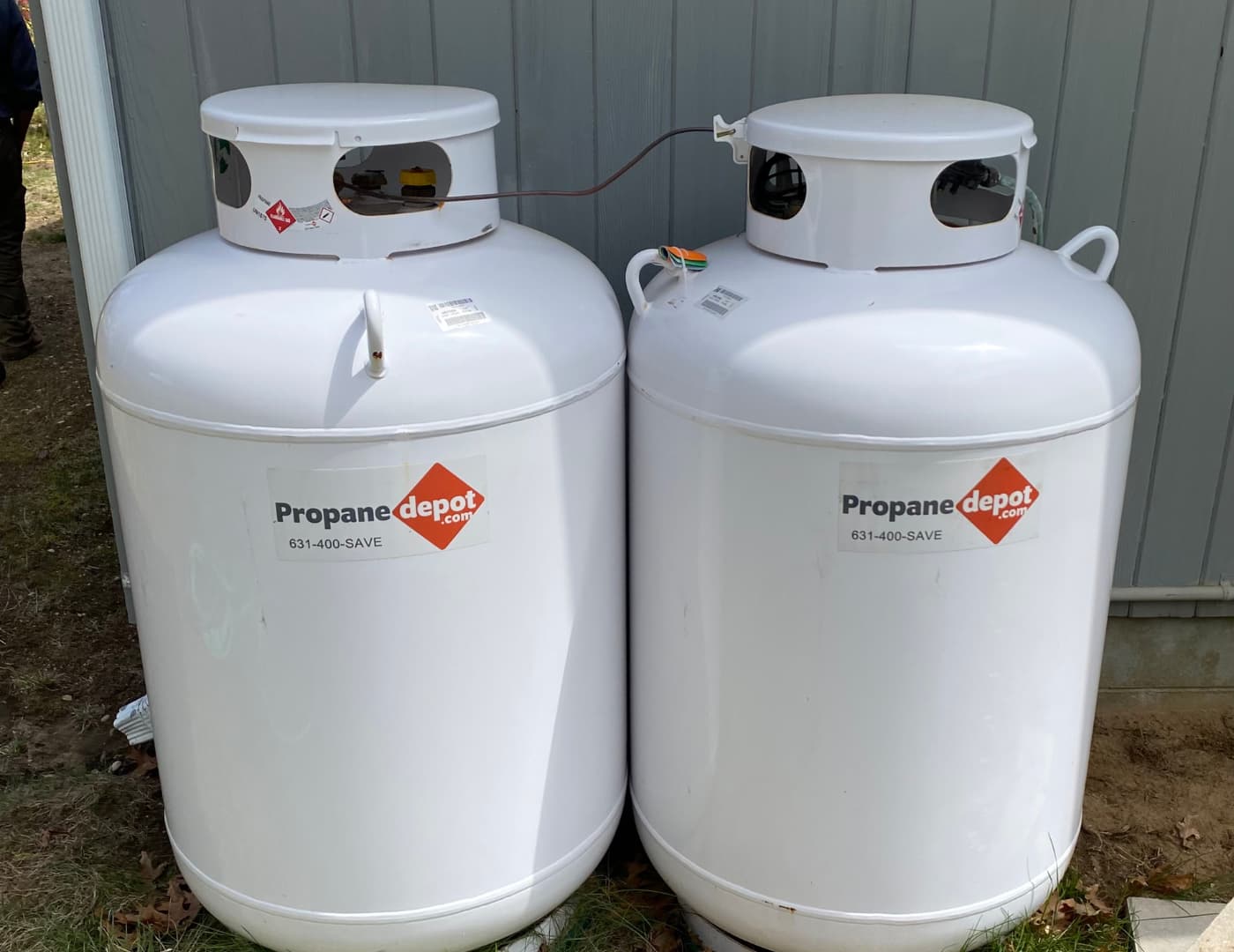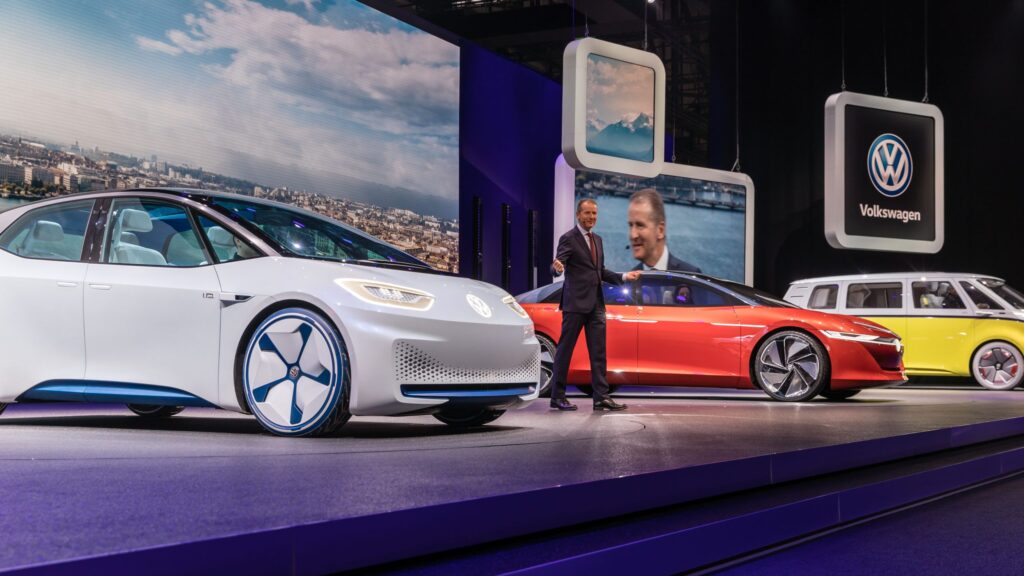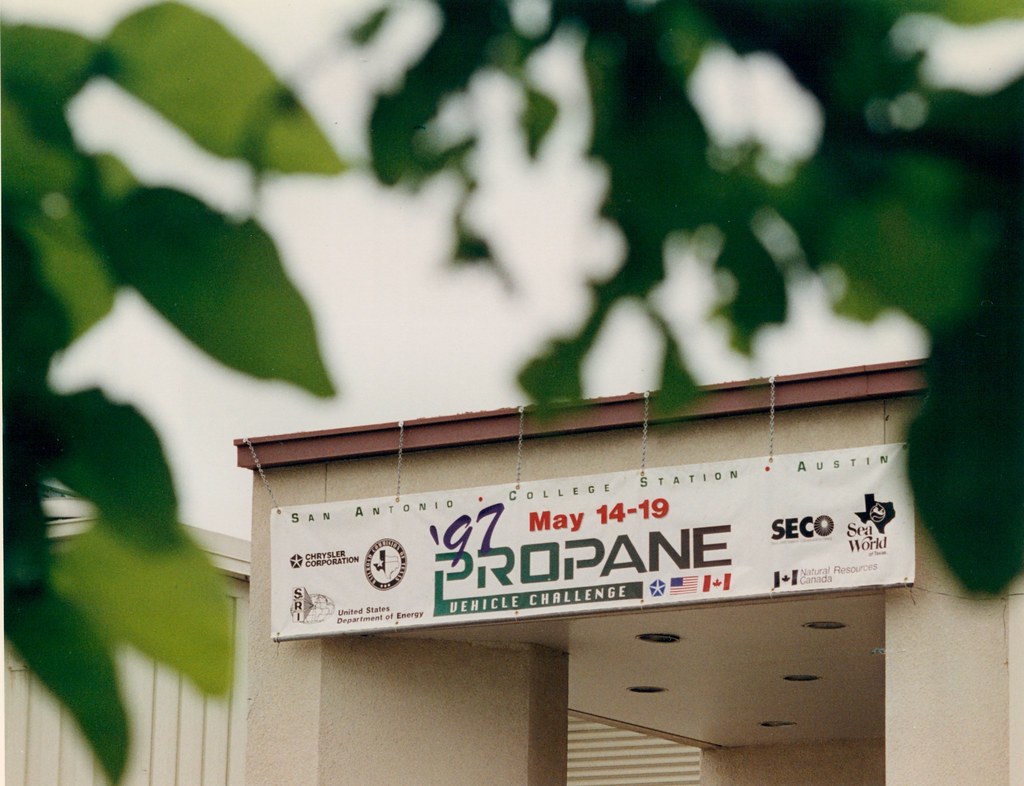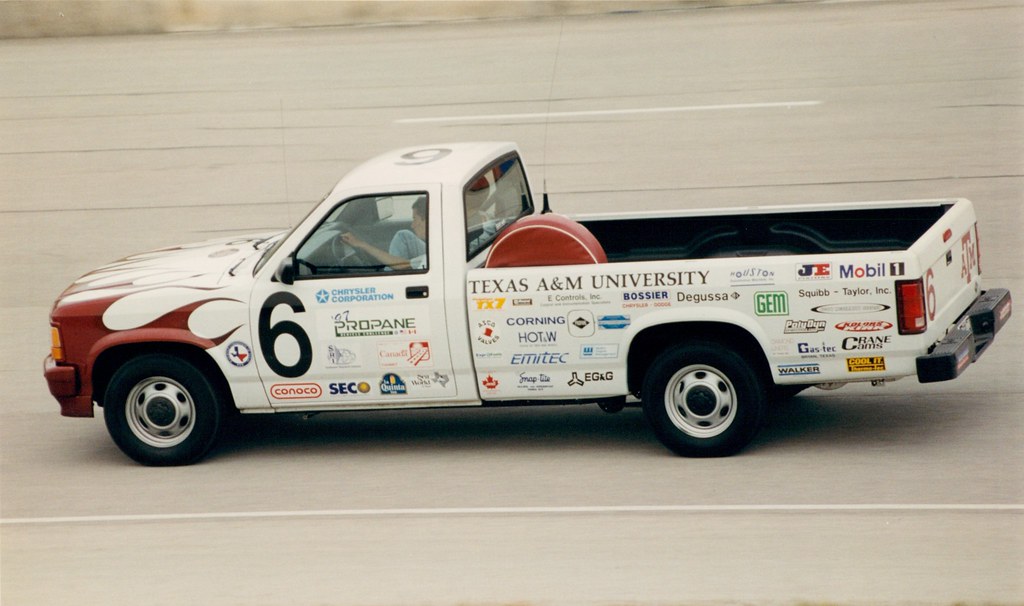
In an era where fuel costs are a constant concern and environmental stewardship is more important than ever, a quiet revolution is taking place on our roads. While electric vehicles often dominate headlines in the alternative fuel discussion, another established, efficient, and clean option is steadily gaining traction: propane. This fuel, widely known for industrial and fleet applications, is now drawing the attention of everyday drivers looking for a smarter, greener way to power their journeys.
Propane-powered vehicles have been a reliable workhorse for years, silently and efficiently handling the heavy demands of industry and transportation. From forklifts and skid steers to buses and public transit, its clean-burning properties and higher energy content per gallon compared to gasoline have made it a favored choice for large operations. Now, thanks to continuous advancements in safety and refueling infrastructure, market experts anticipate significant growth in the consumer and business fleet sectors for propane-fueled cars and trucks.
For many, the idea of converting a traditional gasoline-powered vehicle to run on propane, also known as autogas, might seem like a complex endeavor. However, the benefits are becoming increasingly clear and compelling. Drivers everywhere are taking notice of the significant advantages that propane offers, making the switch to this alternative fuel source a practical and impactful decision for both their wallets and the planet. Let’s delve into the top reasons why this alternative fuel is making such a powerful case for itself.

1. **Significant Fuel Cost Savings**One of the most immediate and attractive benefits of converting to propane autogas is the potential for substantial savings at the pump. Many drivers are fed up with the volatility and steady climb of gasoline prices, and propane offers a much-needed reprieve. Converting a gasoline-powered engine to run on autogas can lead to savings of 30 to 50 percent less per gallon each time you fill up, making it one of the primary benefits highlighted by autogas users.
While the exact savings will fluctuate based on factors such as your fill-up frequency, driving habits, and specific vehicle, propane consistently proves to be a more economical alternative than both gasoline and diesel. With gasoline and diesel fuel often priced in excess of $3.50 per gallon across much of the United States, and even exceeding $5.00 per gallon in some regions like California, the cost advantage of propane is profound. These savings can translate to thousands of dollars annually for motorists.
For the average driver, this could mean annual savings ranging from $1,200 to $1,800. Furthermore, propane’s price remains more stable and less susceptible to the market fluctuations that plague gasoline, largely because 90% of the U.S. propane supply is produced domestically. This domestic production, coupled with the world’s largest storage capacity in the United States, ensures an abundant and reliably priced supply, offering drivers a financial stability that is rare in today’s fuel market.
Read more about: The Ultimate Guide to Used Car Hidden Gems: 12 Models Offering Unbeatable Reliability and Value

2. **Extended Engine Life and Reduced Maintenance**Beyond the immediate financial relief at the fuel pump, converting to propane offers remarkable long-term benefits for your vehicle’s engine, leading to significantly extended engine life and notably reduced maintenance requirements. The fundamental reason behind this advantage is propane’s exceptionally clean-burning nature compared to traditional gasoline and diesel fuels. This cleaner combustion process is a game-changer for engine health.
Propane’s high octane rating means it doesn’t create the carbon build-up often seen in gasoline engines. Less carbon translates directly into less soot and other waste deposits that typically contaminate engines and engine oil. The absence of these harmful byproducts means that engine oil stays cleaner and lasts 25-30% longer, requiring less frequent changes. Similarly, spark plugs can typically extend their life by up to two times, reducing the need for replacements.
Autogas users frequently report increased engine efficiency and a longer time between regular maintenance intervals, leading to overall less wear and tear on crucial engine parts. Because propane enters the engine as a vapor, there’s no “raw” fuel washing lubricating oil off cylinder walls, ensuring piston rings stay better lubricated. This cleaner operation can result in many LPG-fueled engines lasting up to three times longer than identical engines running solely on gasoline, offering a compelling argument for its mechanical advantages.
Read more about: Your Definitive 2025 Guide: What to Check When Buying a Used Electric Vehicle

3. **Remarkable Environmental Benefits**For drivers committed to reducing their carbon footprint and contributing to a healthier planet, switching to propane autogas presents an incredibly compelling solution. Propane is unequivocally one of the most environmentally friendly fuels available on the market, a characteristic that has made it a favorite among public transportation and commercial fleets for years. Its adoption represents a significant step forward in minimizing vehicular impact on air quality.
Compared to gasoline and diesel fuel, propane produces a staggering 99 percent fewer particulate emissions. This dramatic reduction in particulate matter (PM) is crucial, as PM is considered one of the most harmful pollutants to both the environment and human health. The benefits extend further, with propane producing 10-15 percent less carbon dioxide (CO2) and releasing 50-60 percent less nitric oxide (NOx) and other hydrocarbons into the atmosphere. These figures paint a clear picture of propane’s superior environmental profile.
Moreover, propane is an approved clean fuel listed in the 1990 Clean Air Act, further underscoring its environmental credentials. It is non-toxic, with minimal emissions, and poses no harm to soil or water. When released, it dissipates rapidly as a gas, meaning it does not spill, pool, or leave a harmful residue. There is also less pollution from fuel evaporation since propane is sealed in a tank, unlike liquid fuels. These combined factors make propane an outstanding choice for anyone looking to “go green” with their vehicle without sacrificing performance.
Read more about: Unearthing the Untamed: 2025’s Premier Factory Off-Road Vehicles Engineered for American Terrain

4. **Proven Reliability and Performance**While electric vehicles might grab more headlines, propane-powered machines have been reliably cruising the streets for years, quietly proving their mettle in demanding environments. Commonly used in fleet vehicles such as school buses, police cars, and delivery trucks, propane has established itself as an incredibly robust and dependable fuel source. This extensive track record in commercial and public service applications speaks volumes about its inherent reliability.
One of propane’s key operational advantages is its state as a gas when it enters the fuel system. This property makes it practically immune to the cold-start problems that liquid fuels often face, ensuring consistent performance even in the most extreme weather conditions. Its stability and safety have long made it a great choice for commercial applications where consistent operation is paramount. For daily drivers, this translates to peace of mind and dependable starts regardless of the temperature outside.
Additionally, propane’s high octane rating, which typically ranges from 104 to 112, delivers excellent engine performance. Engines optimized to maximize propane’s properties can even deliver improved power and fuel economy. This blend of unwavering reliability, consistent performance, and proven safety makes propane an attractive option for a wide array of vehicles, from personal cars to heavy-duty trucks, debunking any misconceptions about its capability as a primary automotive fuel.
Read more about: Unearthing the Untamed: 2025’s Premier Factory Off-Road Vehicles Engineered for American Terrain

5. **Understanding the Bi-Fuel Conversion Process**For many considering the switch, understanding how a vehicle is converted to run on propane is a critical first step. The good news is that instead of purchasing a dedicated propane-ready vehicle, drivers can convert their existing gasoline car or truck using specialized propane vehicle conversion kits. These kits are designed to transform your vehicle into a highly versatile bi-fuel system, allowing it to operate on both propane and its original gasoline fuel.
The conversion process typically involves installing a separate, self-contained fuel system within your vehicle. This new system includes a dedicated propane tank, specialized fuel lines to safely transport the propane, and an electronic control unit (ECU) that seamlessly interfaces with your vehicle’s existing computer system. When operating on propane, liquid propane travels from the tank to a converter, which then transforms it into a vapor before it enters the engine’s intake manifold for combustion.
A key feature of these bi-fuel systems is the dashboard switch, which allows the driver to seamlessly toggle between propane and gasoline with ease. This dual-fuel capability provides immense flexibility and extends the vehicle’s overall range, alleviating concerns about finding a propane station on a long journey. While the kits typically cost between $3,000 and $5,000 and require professional installation to meet Environmental Protection Agency (EPA) guidelines, the process is straightforward enough that most engines can be converted within a day or two, offering a practical pathway to alternative fuel usage.
Read more about: Behind the Fuel Pump: 10 Major Fuel Types That Are Redefining Energy’s Future

6. **The Evolving Landscape of Autogas Refueling**Historically, one of the primary hurdles to wider propane vehicle adoption has been the limited network of fueling stations. The majority of existing infrastructure has been built around delivering gasoline, consequently steering the bulk of the automobile market in that direction. However, this landscape is rapidly evolving, with significant improvements in refueling capacity and accessibility for autogas.
In recent years, a robust network of “Autogas” dealers has emerged, developing improved technology to deliver propane fuel both on-site and at dedicated autogas refueling locations. These advancements include safe quick-release fuel nozzles and propane dispensers designed to securely lock the vehicle and pump together, creating a seamless fueling system where no propane can escape. This enhances both safety and efficiency, making the refueling experience comparable to gasoline.
Today, there are over 2,500 propane refueling stations nationwide across the U.S., a figure that continues to grow. These can be located using specialized apps like the Alternative Fueling Station Locator or PERC’s propane finder. Major truck stops, including Flying J and Pilot, often offer propane refueling options along major highways. Furthermore, U-Haul locations across the country provide propane refills at over 1,100 stations. For fleet owners, the convenience is even greater, as they often install a propane filling station directly on-site, with local propane dealers able to develop comprehensive plans to supply their fleet’s fuel needs. This expanding infrastructure is swiftly making propane a viable and convenient fuel choice for more drivers than ever before.
7. **Navigating the Initial Conversion Investment**The initial cost of converting a vehicle to run on propane is often a primary consideration for many drivers contemplating the switch. Conversion kits themselves typically range from $3,000 to $5,000, though comprehensive installations, particularly for larger vehicles or more complex systems, can push the total investment closer to $10,000. This upfront expenditure can seem substantial, and it represents a significant hurdle for some consumers who might not have that capital readily available.
However, it’s crucial to view this cost as an investment that delivers substantial long-term returns. The core financial advantage comes from the consistent savings at the fuel pump, where propane can be 30 to 50 percent less expensive per gallon than gasoline or diesel. For the average driver, this translates to annual fuel savings ranging from $1,200 to $1,800, creating a compelling economic case over time.
Beyond just fuel savings, the cleaner burning properties of propane also contribute to reduced maintenance costs and an extended engine life, further enhancing the return on investment. Many governments recognize the environmental and economic benefits of alternative fuels, offering incentives such as federal tax credits and state rebates that can offset up to $2,000 of the conversion cost. When factoring in these savings and incentives, the conversion kit can often pay for itself in as little as two to three years of use, especially for high-mileage vehicles.
Read more about: Unlocking Ultimate Family Comfort: The Definitive Guide to 2025 SUVs with Class-Leading Third-Row Space and Practicality

8. **Choosing the Right Propane Conversion Kit**Selecting the appropriate propane conversion kit is a critical step that ensures optimal performance, reliability, and compatibility with your specific vehicle. While most gasoline-powered vehicles can be successfully converted to run on propane, it’s far from a one-size-fits-all solution. A careful evaluation of your vehicle’s specifications and your driving needs is essential to making an informed decision.
Compatibility with your engine type is paramount. Whether your vehicle utilizes a carbureted, throttle body, or Electronic Fuel Injection (EFI) system, there are specialized kits designed to integrate seamlessly. Even more advanced applications, such as turbocharged and supercharged engines, can be converted with the right system from reputable providers. For example, kits are often specifically designed for light and medium-duty trucks, vans, and various car models to ensure proper fit and function.
It is highly advisable to purchase conversion kits from reputable sellers and to prioritize EPA-certified systems, particularly for newer vehicles. These certifications ensure that the system meets stringent emissions guidelines and is designed for safety and efficiency. High-quality components are crucial for proper integration with your vehicle’s existing computer system and for delivering consistent, reliable performance over the long term, protecting your engine and maintaining your vehicle’s diagnostic capabilities.
Read more about: Investing in Excellence: A Wirecutter Guide to the 7 Best High-End Grills for Unparalleled Outdoor Cooking

9. **Understanding Key Installation Factors**Once the right conversion kit is selected, understanding the installation process and its requirements is key to a successful transition to propane power. For bi-fuel systems, which allow a vehicle to operate on both propane and gasoline, professional installation is not just recommended but often essential. Certified technicians possess the specialized expertise to correctly select and integrate components, ensuring EPA compliance and preserving your vehicle’s warranty.
While DIY installation might be considered for those with extensive mechanical experience, particularly with older carbureted engines, it comes with significant caveats. Meticulous adherence to manufacturer instructions is critical to avoid safety hazards and potential performance issues. However, the complexity of modern vehicle electronics and the precise modifications required for bi-fuel systems typically make professional help indispensable to protect your vehicle’s diagnostic systems and engine control module.
The conversion process involves several critical steps and specialized equipment. This includes safely installing the dedicated propane tank, which may be located in the spare tire area or truck bed, and carefully modifying the intake manifold for injector placement. Furthermore, wiring tools are needed to connect the new system to your vehicle’s electrical network without splicing into factory wiring, ensuring seamless operation. Essential components like fuel regulators, valves, and fittings must be installed correctly, alongside safety equipment such as gloves, safety glasses, and a fire extinguisher.
Upon completion, a thorough testing and tuning phase is vital. This involves adjusting idle settings for optimal performance on propane and conducting a final safety check to verify all connections are secure. Professional installers are equipped to handle these complex procedures, ensuring your converted vehicle operates safely and efficiently.
Read more about: NWS Extreme Cold Alert: A Comprehensive Consumer’s Guide to Winterizing Your Home and Car for Ultimate Safety and Preparedness
10. **A Rundown of Top Conversion Systems**The market offers a variety of robust and reliable propane conversion systems, each engineered to cater to different vehicle types and performance needs. These systems are designed to provide efficient, clean-burning alternative fuel solutions while maintaining or even enhancing vehicle performance.
Among the leading options are **IMPCO Automotive Propane Conversion Systems**. These systems are EPA-certified and renowned for their versatility, compatible with a broad range of vehicles including cars, trucks, and fleet vehicles. IMPCO kits can be configured for both bi-fuel and dedicated propane operations, making them a flexible choice for various driving requirements while ensuring compliance with emissions regulations and consistent performance.
Another highly regarded system is the **Prins VSI Propane Conversion Kit**. Utilizing Vapor Sequential Injection (VSI) technology, Prins systems are designed to closely mimic your vehicle’s original fuel injection pattern. This advanced approach ensures optimal combustion efficiency and is particularly well-suited for electronic fuel injection systems. The sequential injection design delivers precise fuel amounts, contributing to cleaner emissions and a smoother engine operation compared to more traditional systems.
For those seeking straightforward installation and reliable everyday performance, the **Lovato Easy Fast Propane System** is an excellent choice. True to its name, this system is known for its simplicity in both setup and use. It offers remarkable versatility, compatible with both carbureted and EFI engines. Fleet managers often favor Lovato kits for their inherent simplicity and consistent reliability, making them ideal for businesses looking to efficiently convert multiple vehicles with minimal maintenance concerns.
Advancing further into modern engine technology, the **Zavoli Alisei Direct Injection LPG Kit** stands out. This system employs advanced direct injection technology, which is designed to outperform traditional vapor-phase LPG systems in both overall efficiency and emissions reduction. Specifically developed for modern engines, the Alisei kit delivers exceptional performance, particularly in high-demand applications where both power output and environmental compliance are critically important.
Finally, the **BRC Sequent 24 Propane Conversion Kit** provides sophisticated sequential injection technology, making it an ideal choice for high-performance vehicles. Its compatibility with advanced engine management systems means it can be seamlessly integrated into newer models with complex electronic controls. This EPA-certified system is celebrated for its remarkable reliability and efficiency, ensuring that your vehicle not only maintains optimal performance but also fully benefits from propane’s significant cost advantages.

11. **Essential Maintenance Practices**One of the often-understated benefits of converting to propane is the reduced maintenance burden compared to traditional gasoline vehicles. Propane’s exceptionally clean-burning nature minimizes the accumulation of carbon deposits and other waste products within the engine. This fundamental characteristic directly translates into less wear and tear on crucial engine components.
Vehicle owners can look forward to several specific maintenance advantages. Engine oil stays significantly cleaner, extending oil change intervals by an impressive 25-30% compared to gasoline engines. Similarly, spark plugs typically last up to twice as long, dramatically reducing the frequency of replacements. Even fuel filters benefit from propane’s cleaner properties, requiring changes only every 50,000 miles, as opposed to the more frequent 30,000-mile recommendation for gasoline systems.
However, it is vital to remember that propane-converted vehicles still require specific, routine checks of their alternative fuel components. Bi-annual inspections of propane-specific elements are highly recommended. These checks should focus on critical parts such as the converter, solenoid valves, and the integrity of the fuel lines to ensure optimal performance and safety. Occasional calibration of the fuel management system may also be necessary to maintain peak efficiency.
Should issues arise, understanding common troubleshooting signs can be immensely helpful. Reduced power or engine stalling might indicate vapor lock in the fuel delivery system. A distinctive “rotten egg” smell is a clear sign of a propane leak, demanding immediate attention to safety by pulling over and shutting off the system. Erratic idling often points to a miscalibrated pressure regulator requiring adjustment, while a persistent check engine light might signal that O2 sensors need recalibration for propane, necessitating a software update from your installer. Cold-start problems, conversely, typically suggest a minor timing adjustment is needed for improved propane vaporization.
Read more about: Navigating the 2025 SUV Landscape: Kelley Blue Book’s Expert Guide to the Best Two-Row Models for Suburban Families
12. **Effective Strategies for Locating Convenient Propane Refill Stations**The historical perception of a limited fueling infrastructure for propane-powered vehicles is rapidly becoming a thing of the past. Significant advancements in technology and a concerted effort to expand the network have resulted in a robust and growing landscape of autogas refueling options. Today, the United States boasts over 2,500 propane refueling stations nationwide, a figure that continues to climb steadily.
For drivers looking to locate these stations, several practical tools are readily available. Specialized mobile applications, such as the Alternative Fueling Station Locator or PERC’s dedicated propane finder, provide real-time information on nearby stations, including their operating hours and services. These digital resources have made finding propane as straightforward as locating a traditional gasoline station.
Beyond dedicated autogas stations, propane refueling is increasingly accessible at established travel hubs. Many major truck stops, including well-known names like Flying J and Pilot, have integrated propane refueling options along key highways, making it convenient for long-distance travelers. Furthermore, U-Haul locations across the country serve as a vital part of the network, offering propane refills at over 1,100 stations nationwide, catering to both personal vehicles and larger propane tanks.
To ensure a smooth refueling experience, it’s always a good practice to contact your vehicle conversion kit provider. Many providers offer a network of recommended stations and some even provide member pricing discounts. Additionally, always call ahead to verify a station’s current operating hours and the availability of propane, as some locations may require certified personnel to operate the refill equipment. This expanding infrastructure is continuously making propane a more convenient and viable fuel choice for a growing number of drivers.
Embracing propane autogas for your vehicle is more than just a passing trend; it’s a smart, sustainable shift for the modern driver. As we’ve explored, the journey from traditional gasoline to clean-burning propane is paved with compelling advantages for both your wallet and the environment. From significant fuel cost savings and extended engine longevity to remarkably reduced emissions, the benefits are clear and tangible.
The diverse array of conversion kits available ensures that virtually any gasoline-powered vehicle can make this practical transition, with professional installation guaranteeing seamless integration and lasting performance. With an expanding network of refueling stations making convenience a non-issue, the hurdles that once existed are rapidly disappearing. The road ahead for propane-powered vehicles is bright, offering a reliable, economical, and eco-conscious way to drive. Are you ready to join the revolution and power your journey with propane?



